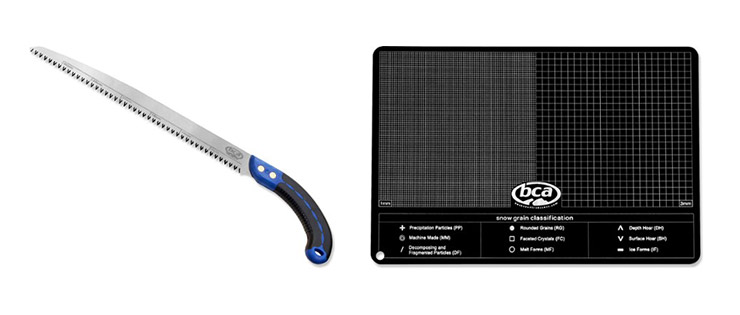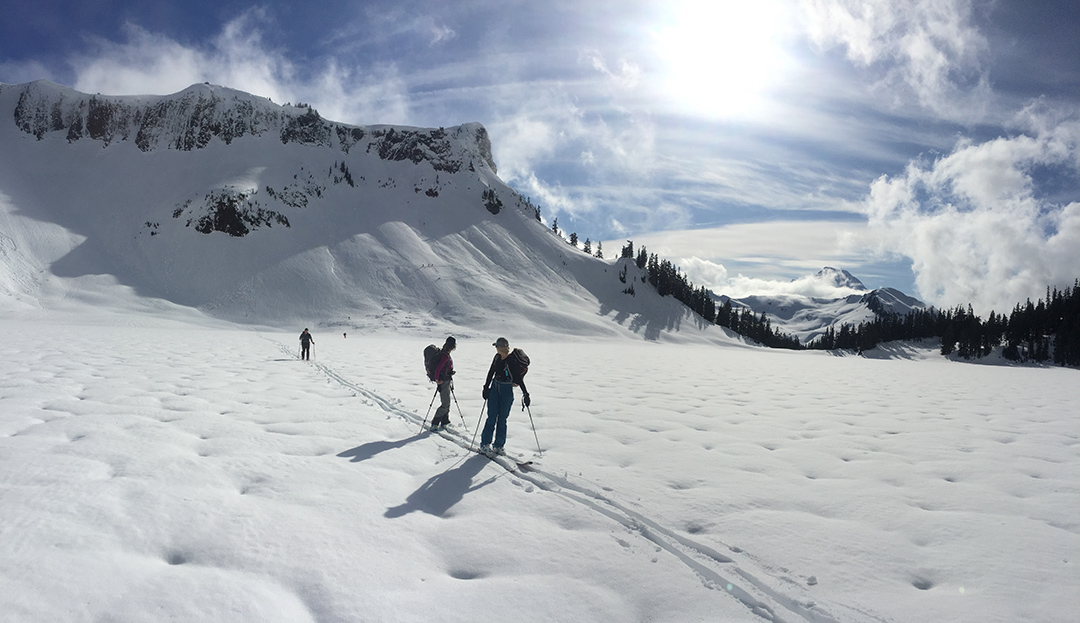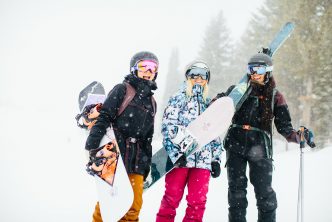Essential gear you need to stay safe in avalanche terrain
No one wants to be caught in an avalanche. The best backcountry skiing is often in avalanche terrain so anyone who ventures into the backcountry should be prepared for the worst. For any backcountry skier, it’s essential to have the proper avalanche safety gear and learn how to use it.
The best way to stay safe is through proper avalanche training and smart decision making in avalanche terrain. However, in the unfortunate event, you or your group is caught in an avalanche, having the proper tools and gear can literally be lifesaving (this could mean the difference between life and death in an avalanche situation).
This article covers some of the basic avalanche safety gear you’ll need, including essential gear, backpacks, and snow science tools.
The best avalanche safety gear is only as good as your knowledge and skills in using them, so understand your gear, your surroundings and be prepared!
Essential Avalanche Safety Gear
The three essential avalanche safety gear items are:
- Beacon (transceiver)
- Shovel
- Probe
Beacon (transceiver)
Beacons are worn under your layers (not in your backpack!) and are with two different signals – search and transmit. A good rule of thumb is to wear your beacon under the last layer you plan not to take off.
Beacons should remain in transmit mode until a rescue situation. Rescuers will change their beacons to search mode when they’re searching for a victim.
Here’s a great article from REI.com on how to choose your transceiver.
Here are some good choices for beacons (I use the Backcountry Access Tracker3):

Shovel
Specific snow shovels are useful for testing snow conditions and quickly digging out victims. When traveling in avalanche terrain, you want your shovel (and probe, mentioned below) easily and quickly accessible from your pack.
It’s also important to learn specific shoveling techniques that are faster and more efficient, which are typically taught in an avalanche safety course.

Probes
Probes are a collapsable aluminum or carbon pole that is used to probe for buried avalanche victims.
Using your probe, you’ll want to start at the epicenter of your beacon reading (where you think the victim is located) and start probing in a circle, gradually getting wider.

Safety Backpacks
There are a number of backpacks on the market that offer life-extending capabilities, such as the AvaLung and airbags.
AvaLung
The AvaLung packs offer a breathing apparatus that pulls from oxygen from the surrounding snowpack where there is more available. AvaLungs can increase the time of survival in a buried snowpack up to 50 minutes.
I wear the Black Diamond Anthem Avalung Pack and it’s great for day tours and trips.

Airbag Pack
There are a number of airbag backpacks that are on the market and have become more accessible over the years.
Airbags are deployed in an avalanche situation and can help increase floatation to the surface. They’re more expensive than an Avalung pack, but could be worth the investment depending on your risk tolerance.

Snow Science Tools
Reading the snow is a crucial part of staying safe in the backcountry. Understanding snow stability can be aided with specific snow science tools, including the snow saw, slope meters, and crystal cards.
Snow Saw
Snow saws are useful in analyzing snow pits and practicing compression tests.
Slope Meter
Slope meters are helpful in understanding the angle of slope. There are also a number of apps on the market that can include a slope meter, including the Mammut Safety App.
Snow Crystal Card
Snow crystal cards help analyze individual snow crystals to determine their size and how well they bond together.

If you’re skiing in backcountry terrain it’s important to be prepared, know your limits, and understand how to properly use your gear. Have fun and stay safe!
Product photos: courtesy of REI.com






[…] This would have likely saved 30 minutes off our skinning time (we skied this path back to our car). This route travels through avalanche terrain so keep a lookout for slides (we saw a small one directly on the skin path) and be prepared for avalanche safety. […]